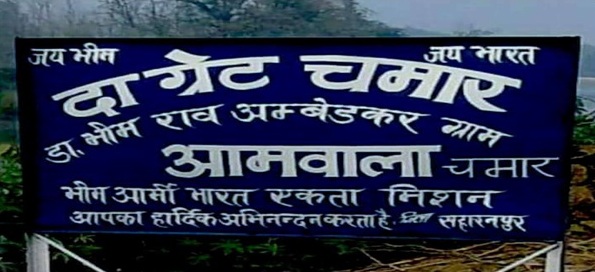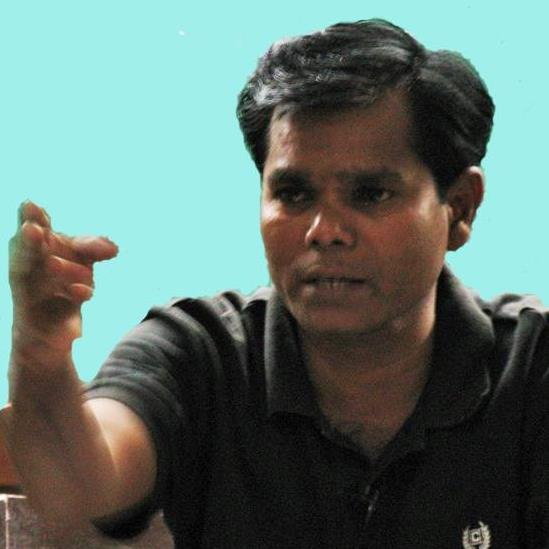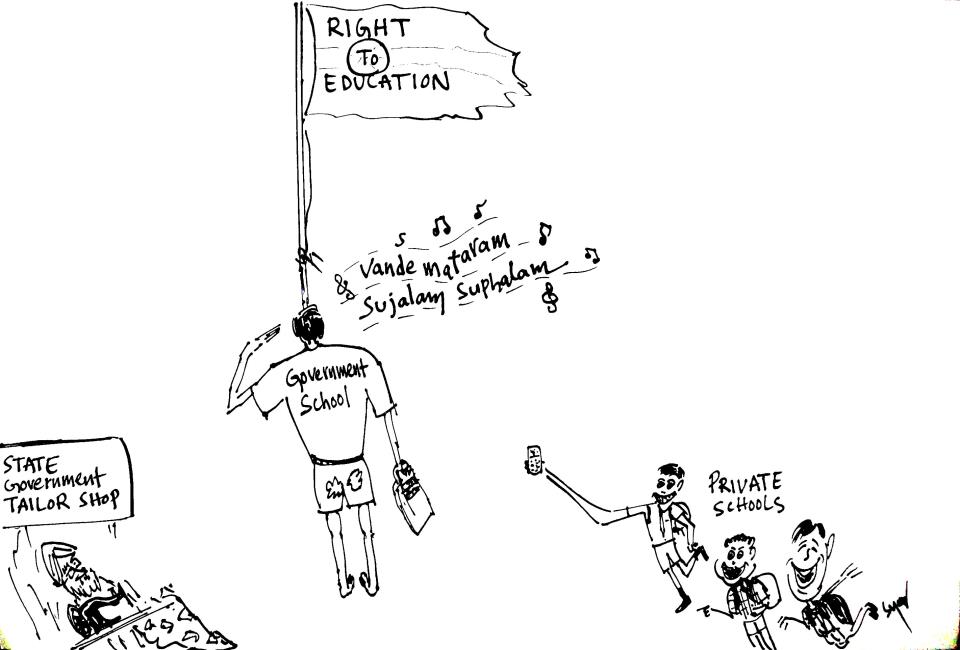Dr Amritpal Kaur

When an ideology for restructuring of human nature and society becomes a religious cult, it not only loses its spirit of rationality and political relevance but its professional representatives also degenerate into mere religious organizations. It then becomes impossible for such a psycho-social philosophy to maintain its effectiveness, particularly in the social arena.
What we call a religion today is the remains of what once was a complete civilization. Born out of a revolutionary Indian thought, Buddhism had been a potent socio-cultural tradition.
Buddhism emerged as a non religious philosophy, as a hope for a better way of life by reorganizing society. As the time passed the basic structure of events that created the original plan got diluted (intentionally diluted for ulterior motives) with local mystical ideologies and degenerated from a rational philosophy that once strove to create a gender neutral environment in the sangha to a women unfriendly religion in practice.
Émile Durkheim, a French sociologist who formally established the academic discipline of sociology and, along with Karl Marx and Max Weber is considered the chief architect of modern social science, ran into difficulty in his attempt to confine Buddhism in the established definition of religion and finally accepted that early Buddhism cannot be covered by any established definition of religion.
Religions are fatherly-figured institutionalised bodies that neither accept the presence nor allow the active participation of femiminine principle in their practice. But Buddha was different. He was not a religious reformer or innovator but was an opponent or critic of religion who had no intention of finding yet another example of what he criticized. He was not the type of recluse who only concerned himself with his personal emancipation but the one who actively involved himself in the social and political world of his time. He was the portrait of a discoverer, initiator and exponent of a psycho-social political philosophy in which gender disparity had no acceptance. He advocated detachment from many useless worldly things in order to enrich life in a wider arena of social and political awareness rather than escaping from it. To say that Buddha founded a religion would be detrimental to our understanding of his far reaching influences.
Buddha never preached a sermon as it would suggest a completely passive role for the hearers. Instead of sermonizing his teachings, he conducted sessions of teaching during which the Buddha tried to suit his words to the occasion, adapting himself to the mood or condition of the hearers. This allowed them a good deal of initiative and active participation. The hearers frequently raised questions or supplied answers to the questions addressed to them by the Buddha. The Buddha’s insight is represented as not that of being a dogmatist who asserts that such and such is the case and demands acceptance of his assertion in faith but rather that of an analyst (in Babasaheb’s words Buddha was a Margadata and not a Mokshdata).
The analysis he offers is logical as well as psychological, having a firm appeal in self authenticating quality.
The two complementary aspects of Buddha’s teaching are reordering of human consciousness (vichar dhamma and achar dhamma) and reconstruction of human society. The first one has received a far greater emphasis and has greater amount of teachings and practices devoted to it because it was the primary concern of the Sangha. Whereas the second component has been a much neglected one despite the fact that Babasaheb was more concerned with the second component of Buddhism i.e. the enlightened political ruler acting in accordance with the general principles of the Buddha’s teachings in collaboration with the Sangha as an advisory body, in order to build a democratic society. These two concerns constituted the Buddhist prescription for curing human sufferings that are not separate from his social conditionings.
It’s important to evaluate the differences between the Brahmanical concept of kingship from that of the Buddhist’s concept which can help us to differentiate between a Brahmanical state from a Buddhist state. In the brahmanical concept of kingship, the king was working out his own personal salvation or moksha by the correct performances demanded by his personal dharma whereas in the Buddhist conception of a democratic government the king was the necessary instrument through which universal dharma or righteousness found expression. The violent conquests to expand his territories was not encouraged by a king in the Buddhist conception of monarchy, rather cultivation of peace both with his neighbours and within his own kingdom was a preferred strategy. Only an awakened king or leader has the right ability to enlarge the psycho-social aspect of Buddhism into a full-fledged socio-political governing body that would ultimately establish an egalitarian society by providing equal social opportunities to all sections of society without frantic competition.
In the Buddhist state, even an ordinary man from any level of society is able to enter the Sangha and thus become a member of a body which has a recognised status and the power to play a real advisory to the political ruler. Every man is a potential member of the society in a Buddhist state whereas in a Brahmanical state such options are not open to a majority of ordinary men but only to a small number of elite Brahmins who act as both ministers and advisers. No one has an option of becoming a Brahmin who is born to such a state.
Buddhist Sangha was not a mere religious wing of Buddhism but a socio- political democratic system of government formed by the bhikkhus, for the bhikkhus and of the bhikkhus. Buddha had firmly rejected any authoritarian rule in his Sangha. There is no monarchical head or authoritarian chain of command because a procedure existed for the whole community to follow corporately, including Buddha himself. Buddha recognised social stability as a necessary requirement for success of social and moral reconstruction and his sangha provided the environment in which a new dimension of consciousness can become possible as a result of rejection of the idea of permanent individuality, both in theory and practice.
Buddha’s concept of social stability did not exclude the feminine principle from practical life. Buddha did not regard women as inferior to men either in terms of intellect or character, nor did he hold them in low esteem. Thus he started bhikkhuni sangha five years after the establishment of bhikkhu sangha in order to create equal opportunities for women in the path of intellectual emancipation.
Buddha decided to have two separate sanghas- one for bhikkhus and other for the bhikkhunis. He was afraid that in a co-fraternity of men and women, the rule of celibacy would be completely lost. So he created a thick walk between them by creating two separate organisations. Rule of celibacy is equally binding to both.
Garudhammas are the 8 rules that symbolically put the bhikkhunis under the thumb of the bhikkhus. The real intention behind framing garudhammas was to present the appearance of conformity to social norms and to promote, not denigrate the interests of women, all the while preserving the Dhamma. The bhikkhuni’s Sangha would have fit poorly into the social norms of patriarchal India and it would have been difficult for them to receive the lay support already enjoyed by the bhikkhus. Monastic Sangha stands in many ways apart from the broader community, engineered as an ideal society and built on values and practices that will often seem obscure to the general society. At the same time it is imperative that Sangha live in harmony with the general society, for it is fragilely dependent on lay donors for all of its material needs. The Buddha was much engaged in maintaining that harmony alongside the integrity of his teachings.
The establishment of a sustainable bhikkhu Sangha presented no great challenges. Wandering mendicants were already very common in India in masculine form, and their aspirations were respected in the general society at least enough for people to offer alms to help sustain them. The establishment of bhikkhuni Sangha would prove far more challenging. There was apparently little in the way of tradition of women among ranks of wandering mendicants except for a recent Jain experiment with the nun’s ordination. The main concern of Buddha would have been that a public that was already quite supportive of the bhikkhus would be less supportive or even hostile with regard to bhikkhunis. This would consequently make it more difficult for them to receive adequate alms to support their practice for they would be widely regarded as incapable of spiritual progress or worse be denigrated as loose women and thereby worthy of support only for wrong reasons and at the cost of their safety. Unlike the uniform absorption of all the castes into the Sangha, which no doubt was facing resistance, the presence of two genders in the Sangha could not be hidden from daily awareness under uniform attire and bald heads.
In order to provide the bhikkhunis the opportunity to learn, practice and live the Dhamma as members of the monastic Sangha, Buddha would have to :-
1. Provide for nun’s education and training to bring them up to the level of the monks as well as provide for their safety yet.
2. Keep the two orders physically independent to discourage romantic interludes and flirtatious behaviours, and to discourage both the genders from falling into accustomed domestic roles.
3. Avoid public impression that nuns are loose women by publicly putting them under masculine authority, yet.
4. Not create yet another patriarchal power structure that would one day be abused by wayward monks.
They were more to serve the public relations function in a rather clever and effective way, intended for public consumption not for monastic.
Buddha did not place any premium on the virginity of a woman. He kept his way open to all classes of women- married, unmarried, widow, prostitutes. All could acquire merit, freedom, dignity and equality along with men. After leaving their lives of domestic and sexual drudgery, they found freedom of mobility and expression. Although they had lost their world, in exchange they had won the status of an individual in place of being adjuncts, however much admired, fostered and sheltered they might be. In allowing women to become bhikkhunis, the Buddha not only opened for them the way to liberty, he also allowed them to acquire dignity independent of sex as rational beings. This was not an empty freedom and this joy of freedom was expressed in therigatha by bhikkhunis in the form of poems.
Therigatha is an anthology of poems by and about the first Buddhist women known as theris, who sought and achieved enlightenment. These are among the most ancient examples of women writings and they are unmatched for their quality of personal expression and the extraordinary insight.
Buddhism realised it’s full potential in the Ashokan period where the cooperation between
(a) the Sangha as keeper of Buddhist values,
(b) the potential Ruler to support the Sangha economically and ensure that Buddhist values permeate society and country’s way of life, and
(c) the Community formed by rest of society not living within the Sangha supporting it as well as welcoming the permeation of these values, has been secured and the Buddhist state came into existence in principle.
This does not mean that all the people had accepted or understood Buddhist doctrines of man, world and human emancipation and were acting upon them, but the conditions were established in which gradual and steady realisation to these values became possible for the community. Buddhist values were given recognition in the structure and the laws of the state.
Sangha, as a bearer par excellence of Buddhist values, can deal with resistive thoughts and actions as long as it is allowed to retain its status in the Buddhist system as a respected expression of wisdom and epitome of morality. Where it’s status is declined the effective permeation of popular culture by Buddhist values also ceases to continue. This is what happened to Buddhism in the post Ashokan period. Theravada school (one of the survivors of 18 schools of non Mahayana, which were collectively called Hinayana) was more effective in retaining the original outlook of Buddha’s philosophy of human existence having clear involvement in government and administration. But it couldn’t survive the anti Buddhist propaganda of brahmins in form of social boycotts and royal edicts against Buddhists, along with forceful confiscation of buddhist structural holdings by the brahmanical kings and the wrath of Muslim invaders. Most of the bhikkhus ran to neighbouring territories to escape persecution but bhikkhunis couldn’t. They were forced into the flesh trade and devadasi system. The self weakening effect which was produced within Buddhism by Mahayana school succeeded in transforming Buddhism into mystical philosophy (which today is one of other varieties of Indian Gnosticism) having no socio-political emphasis. It is a mere philosophy of escapism as well as pantheism i.e a sort of compromise between monotheism and atheism, floating somewhere between theistic heaven and human’s earth. As a matter of fact, most of the Buddhist practices today are an intellectual and emotional device to retain the word “God” without any real concept behind it.
A Bhikkhu or Bhikkuni is someone who attempts to be skillful in all things by renouncing self interest, greed, aversion, and delusion altogether over riding any personal value which might conflict with this resolve. This helps them to enter the most direct path to the perfection of character. This means giving up, what for others are normally compelling values and behaviour. The idea is that anything in your life that threatens to evoke or entangle in greed, lust, aversion, fear and anxiety, is simply let go of. A Bhikkhu or Bhikkuni simply doesn’t participate in the world on his or her own behalf, has no stake in the world that could evoke the unskillful life. Both have to undergo a kind of Robed Walking Science Experiment, if the experiment is a success, then the lay people, short of becoming bhikkhus and bhikkhunis themselves, will start looking at their own lives and asking how they can make it simpler. They are a reality check whose presence has kept the flame of Buddhism burning all these years. Freed of self concern and personal problems, Bhikkhus and Bhikkunis have a valuable reserve of energy available for benefiting others in the fields of social welfare, education as well as teaching the Dhamma.
Buddhism must be studied from two aspects: literary and historical. Literary approach allows us to analyse Buddha’s teachings in relation to teachings of other prominent figures in the history of ideas whereas historical approach allows us to understand the historical situations in which Buddhism emerged as a philosophy and flourished as a socio-political philosophy that did not exclude women. Babasaheb’s concept of embracing Buddhism was more than just man-making. He wanted to use the teachings of his master as a socio-political tool to end his people’s social sufferings.
The Bhikkhu Sangha as the sole representative of the Buddhist sangha can never be a true embodiment of Buddha’s teachings. Sangha as an advisory body consists of both the bhikkhu and Bhikkhuni Sanghas. The bhikkhu and Bhikkuni Sanghas form an inseparable part of Buddhism and act like the two arms of a human body. Balance cannot be sustained unless both are moved simultaneously at the right time. The gradual downfall (universal) of the bhikkhuni sangha is attributed to the imbalance between male and female principles that seeped into the Sangha through weak male egos.
The decline of bhikkhuni sangha is certainly not in line with the basic Buddhist teachings. The Buddha taught Karuna and maitri for all living beings. Why is Buddha’s compassion being stopped to reach women by the false male egoes? The patriarchal practices inside the sangha are not in accord with the principle of anicca. If everything is subjected to change according to the law of impermanence then why does patriarchy still exist in the sangha? If anatta helps us to shed our false masculine and feminine identities then why are bhikkhus still trapped in their male egos which hinder the progress of women?
How can the teaching of universal morality which subjects each individual regardless of class, caste or gender to a uniform code of moral conduct can produce any constructive results if it does not include women at large. If the sangha remains predominantly bhikkhu sangha in future it will be considered no different from other religious sects that simply endorse masculinity and fanaticism while ostracizing the feminine principle from its practice. The uniqueness and universality of Buddhist sangha lies in its representation of gender neutrality which other religions lack. For Buddhism to flourish in India it must preserve its universal approach especially when according to the World Economic Forum’s Global Gender Index 2021 report, India has slipped 28 places, ranking at 140th position out of 156 countries. It will take another 145 years to fill in this gap.
It is imperative that any semblance of gender inequality in Buddhism, symbolic or otherwise, must be removed. Can the male dominated Ambedkarite movement take an initiative to fill this gap? Can the male intellectuals muster up the courage to sacrifice their male privileges for the upliftment of their women, just like Buddha and Ambedkar did??
~~~
Dr Amritpal Kaur is an Oral and Dental surgeon (BDS) from Jalandhar, Punjab. She has been a private practitioner for the last 13 years. She is a writer (on Ambedkarism, Buddhism and Feminism), a Social Thinker and a founding member of the National Council of Women Leaders.










